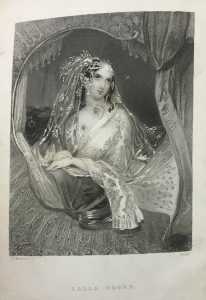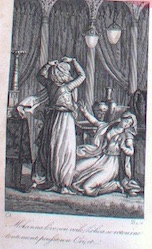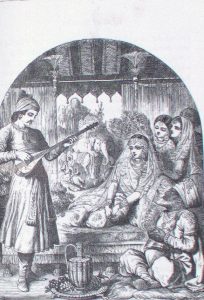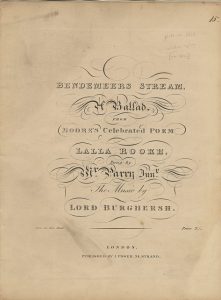An interesting indication of Thomas Moore’s reputation is discovered by consulting historical newspapers. The Belfast Newsletter, as the major source of news and reviews for the city of Belfast since 1828, offers a view of Moore’s profile in a neighbouring city to his birth-place of Dublin. It’s notable that coverage during Moore’s life was more often confined to short references in passing to him, but the final decades of the nineteenth century yielded a few detailed considerations, including a substantial article, “RECOLLECTIONS OF THE POET MOORE”, apparently written by one who had met the poet in 1830 through an acquaintance struck with Moore’s sister Ellen:
… I learned she was Miss Ellen Moore, a sister of the famous Thomas; and great I remember was my gratification when I received one evening an invitation to drink tea with her. … Upon a certain evening I observed preparations being carried on for an entertainment of a more pretentious character; and I learned that Mr. Thomas Moore, having arrived that morning in Dublin, was expected to join our company. A large party was assembled to meet him. I must own to feeling great astonishment at his appearance, as, if his sister was small, he was smaller still-that is, for a man. He was what Charles Dickens would have called a “mite.” He came into the room on tiptoe, at a sort of run, with his head thrown back; and first he kissed his sister Ellen most affectionately, then he kissed nearly every other pretty girl he could get at. His manner was delightfully frank, genial, and winning. He was full of the gossip of the day, and looked like a well-to-do little gentleman who had no other occupation except amusing himself. … In society it was almost impossible to get at him: for he was generally the centre of a perfect galaxy of petticoats. All the prettiest women seemed to fondle and caress him, and treat him much as they would a large wax doll; but when he sang, as he did on that particular evening, two of his famous melodies, the “Last Rose of Summer.” and “Oft in the stilly Night” there was a sensation, a flatter, and a tendency to hysterical emotion instantly perceptible … I cannot attempt to describe either the singing or its electrical effect …
The writer continues by affirming Moore’s standing within Dublin high society at the time:
He was in prodigious request at that time, I remember, in Dublin. The Marchioness of Normandy used to send her carriage to fetch him out for airings in the Phoenix Park, and he was continually receiving invitations to dine with the Lord Lieutenant, or Lord Morpeth, then the Secretary. A covered car, which is a species of conveyance peculiar to Dublin, used to fetch him to these entertainments …
Moore’s reputation extended to his person, for according to this account
In all the relations of private life Mr. Moore’s conduct was unexceptionable ; a better husband, a kinder father never existed; and he allowed his only sister, at whose house I made his acquaintance, out of his own slender income, sufficient for her comfortable support. … –Belgravia
(Belfast Newsletter, 29 December 1874)
Moore was still a subject of academic interest in Belfast over forty years after his death. Reporting on the second of a series of four lectures on Ireland’s contribution delivered by the Rev. C. E. Pike at the First Presbyterian Church, Holywood, the Belfast Newsletter (10 January 1898) recorded the following claim:
Moore is a lyrical poet, and he is one of the greatest of our lyrical poets. No one can read ” The Irish Peasant to his Mistress,” or that weird pathetic wail, ” 0, ye Dead,” without perceiving that though Moore uses English and purer English he has filled it with a passion which is not English; which is rather the transmitted feeling of a long-subjugated race, which has suffered in mute patience, and found consolation in dreams.
This affirmation of Moore’s Irishness – not universally perceived in the decades following his death – is an interesting facet of his posthumous reputation.
All newspaper quotes sourced from https://www.britishnewspaperarchive.co.uk/, 29 April 2018.

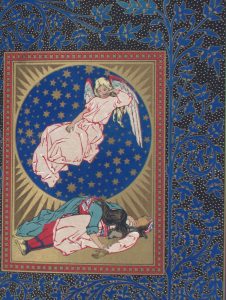
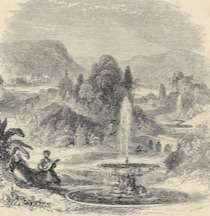
![Irish Melodies [music and illustrations].London London, [1880].Frontispiece](https://blogs.qub.ac.uk/erin/wp-content/uploads/sites/61/2017/08/Irish-Melodies-music-and-illustrations.London-London-1880.Frontispiece1-224x300.jpg)
